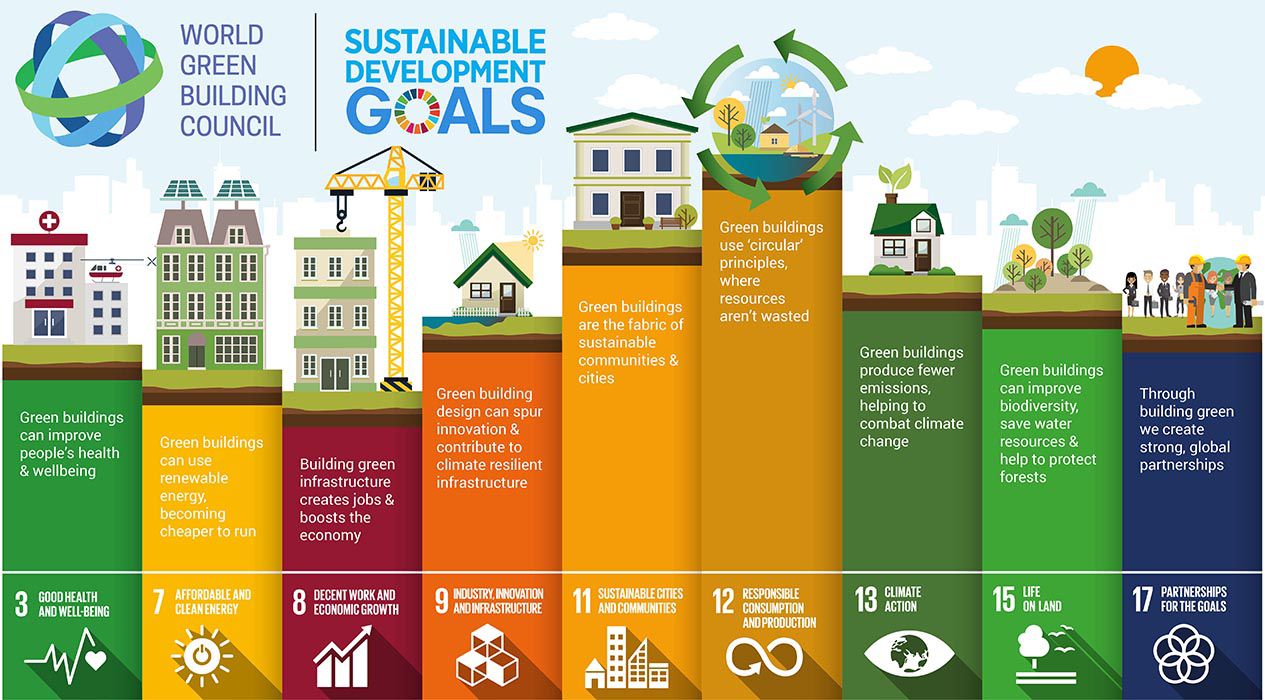Environment, Social and Governance (ESG) continued to be one of the leading topics at Davos 2022. The current geopolitical situation has had a direct hit on increasing energy bills and food prices globally, not only in the UK. This increase in financial pressure, together with the rising rate of emissions has the potential to undermine, if not recede, years of positive gains made in climate action.
On a positive side, a seismic shift can be seen within the boardrooms of large organisations: the Sustainable Development Goals (SDGs), developed by the UN General Assembly in 2015, now take the top slot of the boardroom agenda and are a central driver of strategy for many businesses.
Using technology to solve world's biggest problems
Since their inception in 2015, the SDGs have received growing support from institutions across the world. As customers and investors continuously look for brands with purpose, ESG ratings continue to act as a reflective measure of how well these institutions are performing on their commitment towards driving and leading sustainable businesses. Organisations have now gone past the initial debate questioning the coexistence of sustainability and business; and are now looking at ways to hit the SDGs and improve their ESG ratings.
Technology, for decades, has been perceived as an enabler of business transformation and is critical to enabling organisations’ transition to a sustainable business model. Continuous innovation and technology growth has driven a demand in data centres, raising a question on how to make this growth sustainable.
Green data centres impact at least nine of the UN’s seventeen SDGs and can be used as an opportunity to enhance the existing ESG strategy and contribute towards an organisation’s ESG targets.

What makes a Green Data Centre?
In the technology space, the concept of an eco-friendly data centre by design has been widely discussed. A Green data centre (DC) is a conventional data centre that has been designed (infrastructure, location, fittings, equipment) for maximum energy efficiency and lowest contribution towards environmental impact.
Currently, data centres are consuming around 1-3% of global energy use and might become the world’s largest energy consumers by year 2025. The latest technological breakthroughs by key industry players and pureplay data centre operators have helped to keep the electricity demand flat and shape the compelling value proposition that operating in a Green DC offers.
Some of the latest advancements in Green DC’s are:
- Green Power: Typically, data centres have relied on operational efficiency metrics to reduce the cost associated with running a data centre and address sustainability concerns. However, with the rapid growth of the internet user base and increased business use, pureplay datacentre players have begun to experiment and innovate around green power procurement models.
- Waste Recycling: The excess heat dissipated in the data centres can be recycled to other energy systems for utilisation. For data centres located in colder climates the excess heat can be transported to district buildings. This has been achieved in-practice by Bahnhof in Sweden to pump the excess heat to nearby district buildings. Bahnhof has also been successful in monetising the opportunity by collaborating with the local district authorities.
- Use of IoT, AI, ML for forecasting energy use: Leading technology players have been successful in deploying a strategic combination of Internet of Things (IoT), Artificial Intelligence (AI), and Machine Learning (ML) to bring down the Power Usage Effectiveness (PUE) metric of their datacentres. Using DeepMind AI, Google have achieved 40% reduction in energy used for cooling and 15% reduction in overall energy use.
Summary
Data centres are cost driven. Although greening a data centre will incur upfront capital costs, in the long run it will reduce operational expenditure and improve efficiency. Besides the operational advantages and improved ESG rating, switching to green data centres will have other direct tangible benefits such as an enhanced brand image and a compelling value proposition to offer to clients.
For many customers a strong ESG is an important factor that drives business decisions. In scenarios where a client's data is hosted in Green DCs, the sustainability benefits driven from these eco-friendly centres can be passed on to the end consumers, benefiting the businesses and most importantly the environment.
At KPMG, we can help you reduce your organisation’s IT carbon footprint in multiple ways:
- KPMG Transformation Impact Modeller (TIM) is a state-of-the-art tool which has helped IT organisations make hosting decisions around billions of pounds worth IT infrastructure spend. It now includes a sustainability module, where we can help you measure ESG performance and allowing you to make informed decisions on your carbon emission strategy.
- KPMG True Value is a tool to assess your organisation’s most significant economic, social and environmental impacts, both positive and negative. We will provide you a new lens for decision-making to improve performance, inform strategy and increase influence.
- KPMG Cloud transformation and advisory - KPMG is a leader in cloud consulting: we are recognised by Forrester as the leading independent cloud advisory consultancy. We offer a collaborative and objective approach to transform your IT infrastructure and help improve the strategic value of your technology investments.
For more information on Green Data Centres please get in touch.



